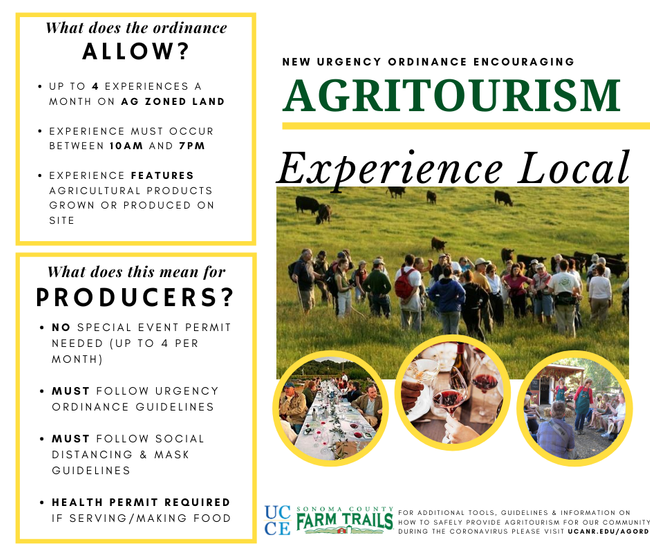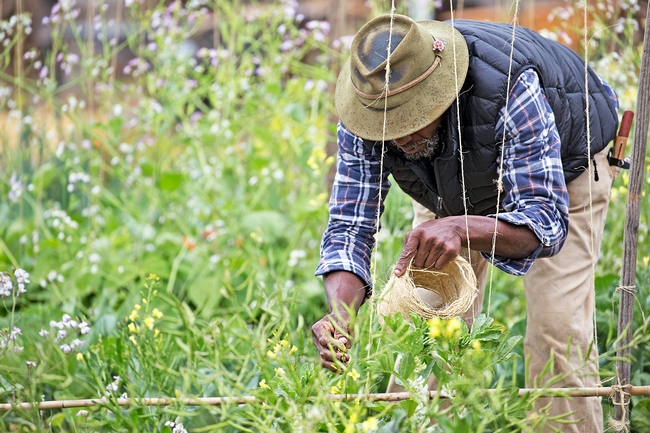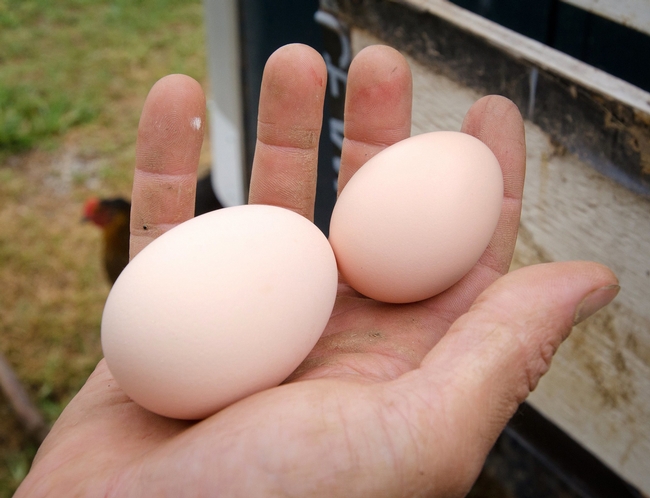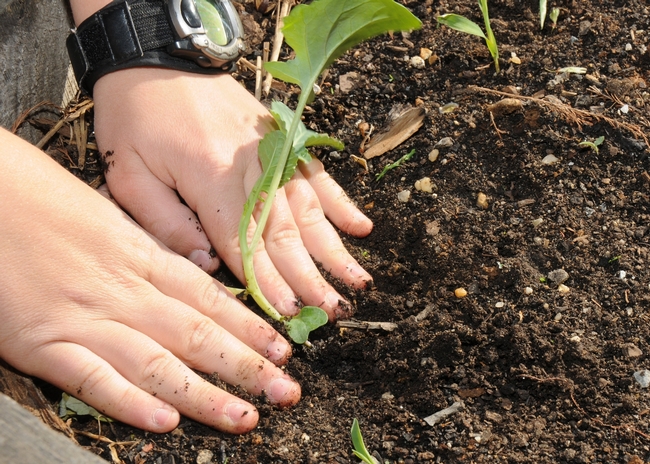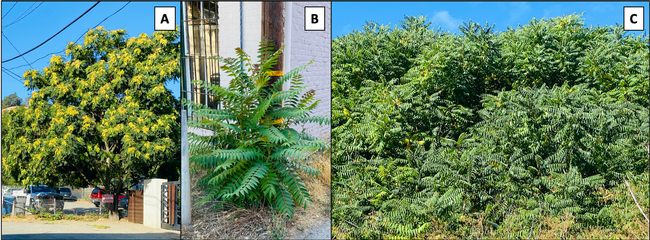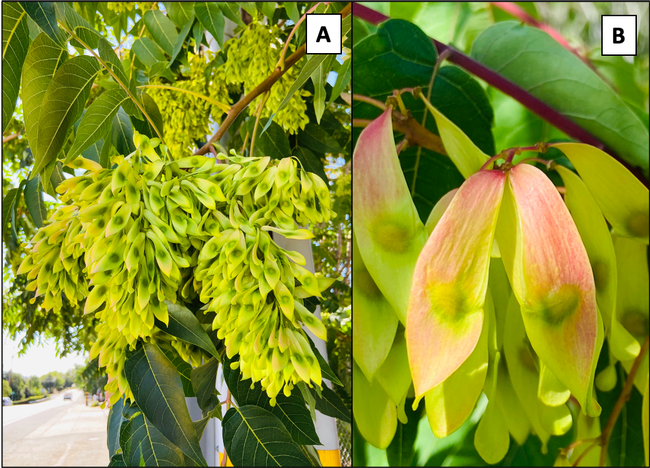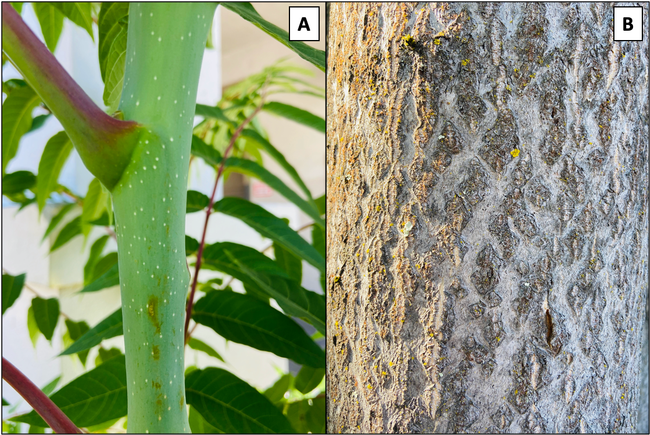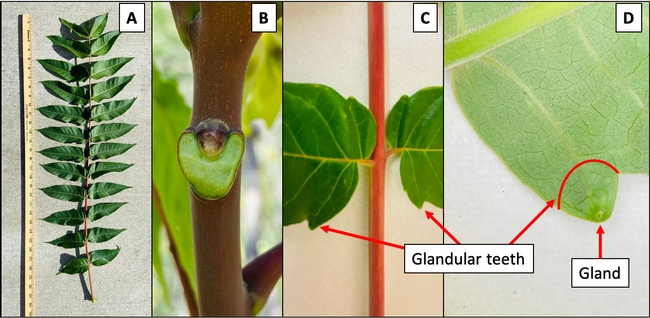- Author: Steven M. Worker
New Extension Peer Reviewed Curriculum
Through an innovative collaboration with the University of Minnesota Center for Sustainable Polymers, Minnesota, California, and New York 4-H Cooperative Extension educators partnered to develop and pilot youth-driven curricula
Focusing on the use and impacts of plastics and sustainability.
The overarching focus is introducing youth to the prevalence and impact of plastics in everyday life. Experiential activities help youth learn that plastics are versatile materials that come in different shapes, sizes, and exhibit different material properties. Youth learn that there are many advantages of using plastic as they can be lightweight alternatives that can save on fuel and energy. Youth also learn that there are many disadvantages to using plastics, including extracting costs and environmental impacts and a long post-life impact. Youth learn that while some plastics may be recycled and reprocessed, not all plastic makes its way to the recycling bin.
The curricula also introduce youth to the new ways scientists and engineers are working to create, use, and recycle plastics so we can use plastics for their many advantages and lessen their effects on our environment. Some plastics are now designed to biodegrade without polluting the environment and others are created using renewable resources to lessen the dependence on traditional, oil-based plastics.
Sustainable polymers must address the needs of consumers
without damaging our environment, health, or economy.
The curricula were designed to build foundational skills of science and engineering: observation, asking questions and defining problems, planning and carrying out investigations, and communicating. The curricula are intended for delivery in out-of-school time facilitated by an educator (trained volunteers or program staff). Three curricula are available:
- Grades K-2: Focusing on introducing youth to science and engineering as they explore properties of materials and discover how objects are designed with material properties.
- Grades 3-5: Focusing on concepts of: materials; plastics; reduce, use, recycle; and the work of scientists and engineers. Get the curriculum here
- Grades 6-8: Focusing on the prevalence and impact of plastics in everyday life. Youth then become change agents as they discover and work on a plastic sustainability issue that affects their community.
Modules are available for download. Print copies are available from Shop 4-H (only K-2 is available now, grades 3-5 and 6-8 are coming soon).
For more information, please contact Steven M. Worker, PhD, 4-H Youth Development Advisor serving Marin, Sonoma, and Napa counties, smworker@ucanr.edu
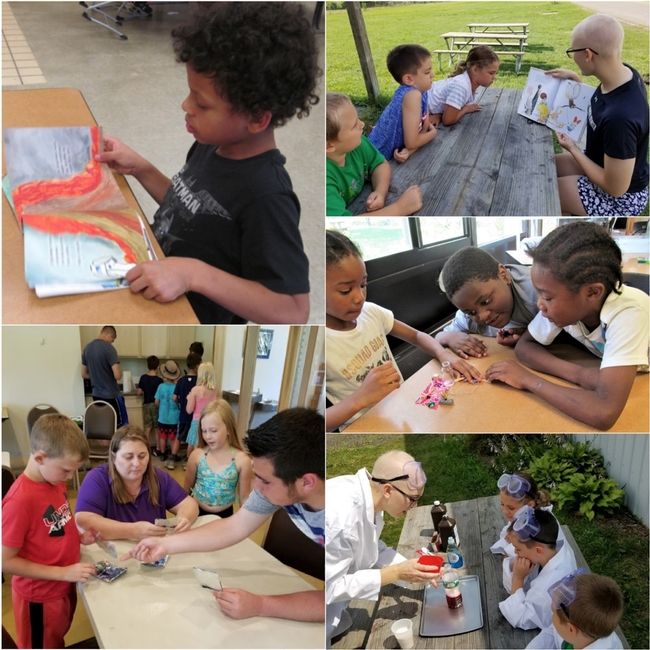
- Author: Jeannette E. Warnert
A summer of smoke and ash in many parts of California has raised questions about the safety of produce growing on farms and in the garden, eggs laid by chickens who peck around in ash-laden areas, and remediation needed to safely and effectively grow food in the future.
UC Agriculture and Natural Resources brought together experts who have researched the effects of previous fires' fallout and studied soil contaminants to share their insight in a two-hour webinar now available at Post-fire Soil Safety video.
“The No. 1 health concern during a fire is smoke inhalation, and it's been well documented that wildfire smoke can negatively impact both the heart and the lungs,” said Claire O'Brien, a pharmacology and toxicology doctoral student at UC Davis. “However, the chemicals found in the smoke don't just stay in the air. They can deposit onto plants and into soil and water.”
Although every fire is unique, some generalizations can be drawn from research conducted following previous fires. UC Cooperative Extension food systems advisor Julia Van Soelen Kim detailed a study conducted following the October 2017 wildfires in Sonoma County and across the North Bay.
With the help of UC Master Gardener and community volunteers, the researchers collected over 200 samples of homegrown collard greens, lettuces, kale and chard that were exposed to wildfire smoke and ash. A subset of the samples were analyzed by a private laboratory.
“There was very low concern about chemicals on produce,” Van Soelen Kim said. “No samples had detectable levels of lead, arsenic, mercury or chromium. And that's a huge sigh of relief.” However, analytical results vary by site, site history and by fire event, and few have pre-fire baseline data to compare with.
Van Soelen Kim said basic food-safety practices should be followed when preparing to eat food grown in a home garden, regardless of ash or smoke contamination.
“You should always wash your hands before and after harvesting, and wash your produce in running water to mitigate any kind of potential risk,” she said.
Are backyard chicken eggs safe to eat?
Another study outlined at the webinar used a similar process to determine whether there might be contaminants in the eggs laid by backyard poultry that live and feed in areas exposed to wildfire ash and smoke.
Scientists know from previous research that chickens exposed to lead in their environment can produce eggs with high lead content and that heavy metal content of ash from urban wildfires is higher than from rural wildfire.
“We combined those two pieces of research with what we know that chickens do all day: they peck at the ground for hours on end,” said Todd Kelman, a veterinarian in the School of Veterinary Medicine at UC Davis. “That makes for a pretty good hypothesis that urban wildfire could pose a risk for the production of eggs and poultry that contain heavy metals.”
Kelman and his team put out a call for eggs from backyard poultry and received samples from 344 premises in fire-affected and non-fire-affected areas of California.
Surprisingly, egg samples that contained higher lead levels came from parts of the state that were not directly impacted by ash and smoke.
“Did our data support our hypothesis that proximity to urban wildfire is a driving source for lead in eggs of backyard poultry? The answer is not so much,” Kelman said. “So, is it safe to eat eggs from your backyard poultry? We can't give you a definitive answer to that question. But we do suggest you assess your risk and reduce the risk of contamination.”
Practices that reduce the risk include keeping chickens off the ground, using a chicken feeder that prevents spillage onto the ground and making calcium readily available, for example in the form of oyster shells, because calcium can prevent the absorption of lead. Making sure that chickens are provided uncontaminated water is also an important part of risk reduction.
For confirmation on the safety backyard chickens and their eggs, lab tests for eggs are available for $60 from the California Animal Health and Food Safety Laboratory at UC Davis, or chickens may be submitted to CAHFS for necropsy.
Are soils safe for growing food after a fire?
Fire effects on soil is another consideration in burned areas, said UC Cooperative Extension urban agriculture advisor Rob Bennaton.
“Fires heat topsoil layers. They reduce the amount of living micro-organisms at the site of the burn, and also affect organic matter and nutrients. Ash deposits over time may make soils more alkaline,” he said. “As a result of these combined factors, there are temporary changes in nutrient levels and the capacity for soils to exchange nutrients for optimal plant growth and nutrition.”
With proper land care and management, soils can be remediated over time.
“It won't happen overnight. Soils were developed over millions of years,” he said.
Some ways to improve safety when gardening in fire-affected areas including keeping the soil covered with wood chips or other landscape mulch to reduce airborne soil dust. Use drip irrigation to prevent up splash onto the undersides of growing vegetables. Promote good drainage, especially at the bottom of slopes to prevent the concentration of contaminants.
Lab tests are often needed to determine the soils' post-fire characteristics. “Don't guess, but test,” Bennaton said.
The UC Master Gardener Program can provide technical assistance to help home gardeners find resources for home soil testing, he said.
Resources and information shared during the webinar
Post-fire soil resources and soil testing information
- UCCE publication on Soils in Urban Agriculture with soil testing & sampling information
- The UC ANR Healthy Soils Website, which has many resources worth reviewing.
- Tips for Interpreting Soil Analysis
- UC Master Gardener of Sonoma County 2018 workshop video “Effects of fire on soil”
Post-fire food safety
- Research on produce safety and backyard chicken egg safety after the 2017 wildfires in California is available at Produce Safety after Urban Wildfire. To view a past webinar recording with these research findings, visit Post-fire Food Safety.
- Poultry wildfire resources from the UC Davis School of Veterinary Medicine
- UC Davis School of Veterinary Medicine: "Safety of Backyard Chicken Eggs Post Wildfire" video
- Best Practices for Produce Safety After Fire
- Understanding Risk: A community guide for assessing the potential health impacts of locally grown produce exposed to urban wildfire smoke
Firewise and sustainable home landscaping design in the defensible space zone
- Visit the UC Master Gardener Program of Sonoma County firewise landscaping web page.
- For a recent firewise & sustainable design and maintenance video by the Resilient Landscapes Coalition.
Impact of smoke & ash on plants
- Author: Mimi M Enright
The UC Master Gardener Program of Sonoma County (MGSC) Garden Sense program via its sponsoring organization, Sonoma Water, was named the recipient of the Smart Water Application Technologies (SWAT) Outstanding Public Engagement Award on October 29, 2020.This award recognizes a water provider with a successful program focused on public engagement and education on smart, efficient irrigation technologies and practices. 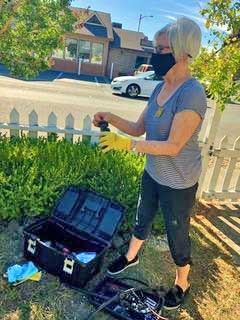
The Garden Sense program, initiated in September 2013, is available free of cost to any Sonoma County resident. MGSC presently has 46 trained volunteer Garden Sense consultants who meet with residents in their gardens to evaluate their existing landscaping and irrigation practices, and advise them on how to increase their irrigation efficiency, reduce or remove their lawns, and create climate-appropriate gardens based on their functional needs. Over 900 client consultations have been conducted since the program inception.
Clients who have received a Garden Sense visit are surveyed and asked to rate how helpful the program has been in helping them complete their lawn removal project and/or change their home irrigation practices. The majority of respondents indicated that the visit was either ‘Very helpful' or that they ‘Could not have done it without them'. Conservative estimates of water savings as a result of Garden Sense consultations are equivalent to 26 million gallons of water over the life of the program! One of our clients who was new to the Sonoma County area stated:
“We couldn't have done it without them . . . their advice and expertise was essential to our successfully creating a low water-use landscape. Thank you so much!”
Visit Garden Sense for more information
about the program, or to request a visit.
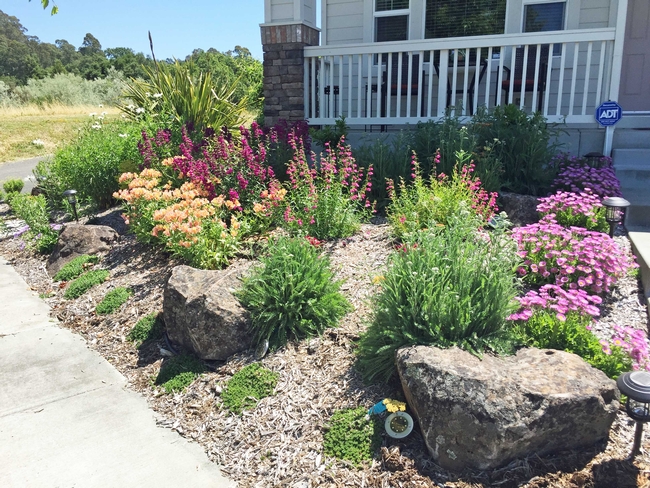

- Author: Cindy Kron
Invasive tree-of-heaven is a preferred host for two invasive insect pests that cause economic damage in California agricultural crops
It is not uncommon for commercial agriculture to share a common boundary with riparian, forested or urban areas in California. Some pest species thrive in these border areas and serve as a source of insect pest pressure on neighboring commercial crops. Invasive species that find preferred hosts in these border areas can be especially problematic in that their new environment lacks the predators from their native habitat that would normally suppress and keep their population manageable. This uncontrolled population growth can result in significant economic damage to nearby commercial crops.
The tree-of-heaven (TOH), Ailanthus altissima, is an invasive tree that has been documented in 45 states including California. This deciduous tree can be found in agricultural, urban, riparian and disturbed forested areas (Fig. 1A, 1B). This tree serves as a preferred host of two invasive species: the brown marmorated stink bug (BMSB), Halyomorpha halys, and the spotted lanternfly (SLF), Lycorma delicatula.
In California, BMSB is established in 16 counties and detected in 23 additional counties. The brown marmorated stink bug has over 170 host species (fruit, nuts, vegetables, and ornamentals) including the following agricultural crops: grape, pear, apple, stone fruit, citrus, blueberry, raspberry, blackberry, fig, almond, hazelnut, sunflower, sweet corn, soybean, okra, bell pepper, green bean, tomato, and eggplant. To date, in California, BMSB has been observed causing damage in commercially grown almond, apple, peach, and pear orchards.
The SLF has been recorded in 6 East Coast states but has not yet been documented in California. This insect lays eggs on plant and nonplant items such as stones, pallets, outdoor furniture, railway cars, firewood, and vehicles, which contributes to their wide dispersal ability and their likelihood of unintentional introduction into California. The SLF has at least 40 host species (fruit, nuts, ornamentals, and woody trees) found in North America including the following agricultural crops: grape, stone fruits, apple, blueberry, fig, hops, walnut, and almond.
BMSB and SLF share some similarities. Both are native to China, introduced into the U.S. via Pennsylvania, cause economic damage in a range of commercial crops found in California, and aggregate in large numbers. The tree-of-heaven is a preferred host.
In addition to supporting the growth of economically damaging insect pests, the tree-of-heaven has its own impacts on the ecology of areas where they establish. The tree-of-heaven competes with native plants and trees by releasing allelopathic chemicals that prevent the establishment and inhibit the growth of native trees nearby (Fig. 1C). The tree has a rapid growth rate of 3 to 6 feet a year and is able to start bearing seeds within 2 to 3 years. Female trees can produce more than 300,000 seeds (Fig. 2A) that are easily dispersed by the wind allowing for new trees to establish some distance from the parent tree. Established trees can also spread by sending up root suckers up to 50 feet from the parent tree. In addition, small root fragments can also generate new shoots. An injured or cut tree-of-heaven responds by producing numerous root sprouts that allows the tree to spread prolifically and complicates efforts to remove the invasive tree. The tree-of-heaven is a high pollen producer aggravating those with allergies. Direct contact can cause skin irritation and, in rare cases, inflammation of the heart muscle has been documented from exposure to sap through broken skin. These features of tree-of-heaven fuels its ability to invade new environments and makes it very difficult to remove after it has become established.
Being that the tree-of-heaven is invasive and also supports two invasive insect pests that are known to cause economic damage in a range of commercial agriculture crops grown in California, it is important for the agriculture industry to become familiar with how to identify the tree-of-heaven. This knowledge can be used to increase the awareness of the proximity of these trees to host crops that you work with, manage or own. Calculated management decisions can then be made from this information.
The tree-of-heaven is similar in appearance and can easily be confused with a handful of native tree species: black walnut (Juglans nigra), winged/shining sumac (Rhus copallina), ash (Fraxinus spp.), staghorn sumac (Rhus typhina) and butternut walnut (Juglans cinerea). Young tree-of-heaven have greenish smooth bark (Fig. 3A) that turns a greyish-brown in older trees resembling the skin of a cantaloupe (Fig. 3B). Leaves have a central stem with 10 to 40 leaflets attached on each side by a short petiole (Fig. 4A). A V-shaped or heart-shaped scar is noticeable when a leaf is broken off of the main stem (Fig. 4B). The margins of the leaflets are smooth with one to two bumps called glandular teeth that protrude at the base of each leaflet near the petiole (Fig. 4C). A corresponding gland is located on the underside of the leaflet where the glandular teeth are located (Fig. 4D). A strong odor described as cat urine, rancid cashews or burnt peanut butter is given off when the leaves or stems are crushed. Twigs break easily exposing a brown spongy pith. Tree-of-heaven are dioecious with separate male and female trees. Female trees produce red, yellow and green “samaras” that each contain one seed covered by a winged and papery tissue used in wind dispersal (Fig. 2B).
Agricultural land and nearby areas should be inspected for existing tree-of-heaven stands. There are different strategies that can be followed upon identifying this tree in or near farmed land. The first strategy is to use the tree-of-heaven as a sentinel tree that is visually inspected periodically for the presence of BMSB and SLF life stages during the growing season. This would be an easy and ideal option if either invasive pest is not reported in your county or nearby counties. Early detection can help prevent establishment in your county and the economic damage that these invasive species cause in commercial crops. Any sightings or insect samples should be submitted to your local county agricultural commissioner's office.
A second strategy could be used if detections of either invasive species have occurred in your county or local area. Traps for BMSB monitoring can be deployed using a double-sided sticky panel with a dual lure and placed near the tree-of-heaven. If SLF were to arrive in California, brown sticky bands wrapped around the trunks of tree-of-heaven can capture the immature stages as they engage in their typical behavior of walking up the tree. Trap finds can alert growers of an invasive species presence in an agricultural field and treatment decisions can then be made.
A third strategy would be to remove tree-of-heaven, but this comes with a warning: mowing or cutting, by themselves, are ineffective and can cause the tree to spread prolifically. Care needs to be taken when deciding to remove tree-of-heaven since a cut tree responds by sending up numerous root sprouts up to 50 feet from the parent tree. Timing of treatment and commitment to follow up with subsequent treatments the following year are crucial for success. If tree removal is the decision made, the root system should be targeted with a systemic herbicide 30 days before cutting the trees and the application needs to be made between July and mid-October when carbohydrates are being allocated to the root system. If an herbicide is applied outside of this range, the application would likely be ineffective due to targeting the above ground growth and not the root system. Gloves, long-sleeved shirts and pants should be worn during tree removal to prevent the contact of tree parts and sap with the skin. Follow-up monitoring is needed to determine the need and timing of additional treatment applications.
- Author: Karen Giovannini
Agriculture in Sonoma County is a core industry and there is concern that small agricultural operations in particular will have a difficult time adjusting to and recovering from the Shelter In Place and this could jeopardize access to local agricultural products. The urgency ordinance provides measures that allow farmers to augment income, expand supply chain and marketing opportunities, teach residents and visitors about agriculture, and offer the public another option to enjoying the outdoors in a safe manner.
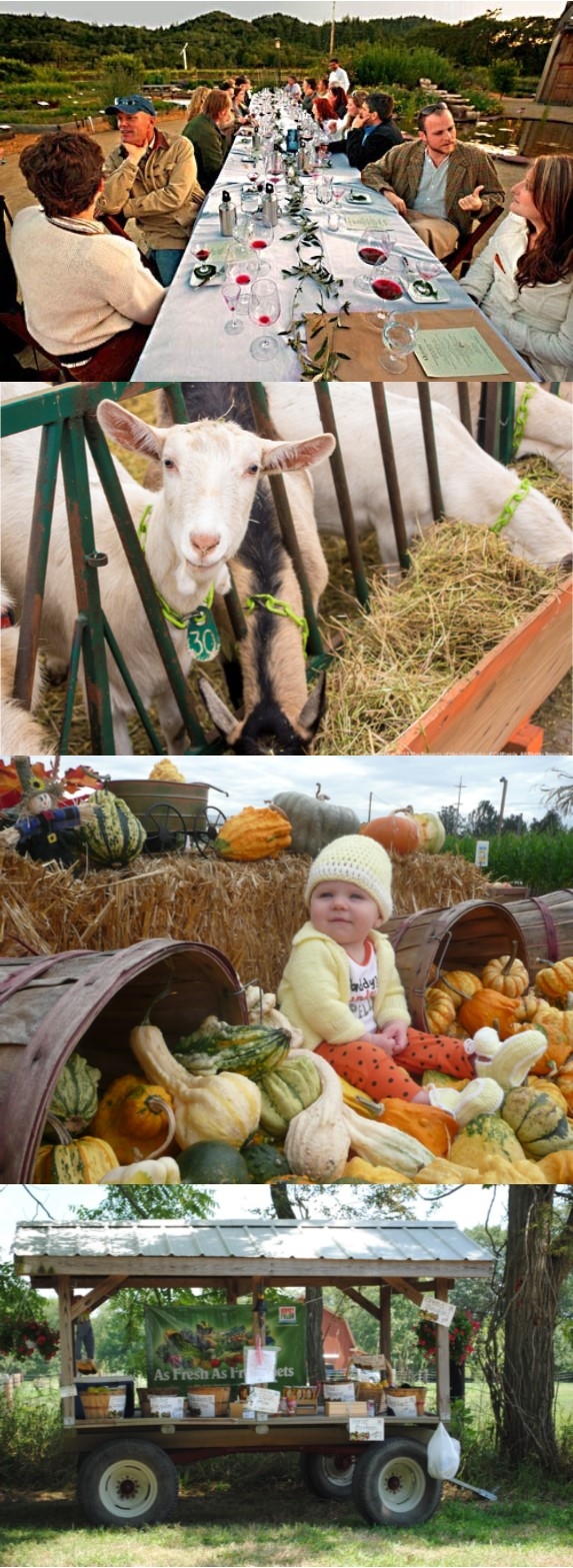
This is great news for operations looking to offer agricultural experiences. Under the ordinance, agricultural experiences can now occur without obtaining a Special Events permit from Permit Sonoma, saving time and money!
What are agricultural experiences? Could they include a tour with an outdoor activity – goat yoga perhaps? Or a farm to table meal? Educational day camp where participants make meals with farm produce? Picnic Day on the farm? Any of those and more are included.
The Rules
This applies only to agriculture zoned parcels (LIA, LEA, DA). If you are not sure, visit Permit Sonoma ActiveMap and input your address. If the zoning is correct, activities must comply with the following:
- Incidental to a primary agricultural use.
- Features agricultural products grown or produced onsite.
- No amplified sound or loud musical instruments, such as horns, drums, or cymbals.
- Occurs during one day between the hours of 10 am and 7 pm. This means it's not a two (or more) day event, it's a one-day event/experience that can occur up to 4 times a month.
- No overnight sleeping accommodations.
- Up to 4 agricultural experiences per month. Note: hikes, tours, and educational seminars without additional activities are not limited.
- Attendees cannot exceed the lesser of the following:
- The maximum number of individuals in a group allowed under the County Health Order for outdoor recreation activity businesses, or for gatherings if outdoor recreation activity businesses are no longer specifically limited; or
- 49 attendees.
- No permanent improvements are necessary to accommodate or support the agricultural experience, such as construction or grading.
- Compliance with environmental health requirements, including those related to food service, porta-toilets, and trash containers, fire and building code requirements, the Department of Alcoholic Beverage Control, and any other applicable requirements.
Additional Considerations
This is a wonderful way to bring customers to your farm and to build your customer base. And an effective way to test out agritourism. Is it for you? If you are new to agritourism, we recommend you consider the following as you plan inviting visitors to your farm:
- Insurance can be expensive but is a necessary protection. Talk to an agent familiar with agritourism.
- Safety of visitors: tripping hazards, aggressive animals, climbing hazards. (See: safeagritourism.org)
- Sanitizing, restrooms, and wash stations; follow guidance from Sonoma County public health officials.
- Your capacity for added activities, along with that of your family members, employees.
To learn more about this ordinance, visit ucanr.edu/AgOrd.
About agritourism: ucanr.edu/AgTour and ucanr.edu/CalAgTour.
Publication: Agritourism and Nature Tourism in California, available for purchase from UCANR catalog.
Contact: Ag Ombuds: klgiov@ucanr.edu
